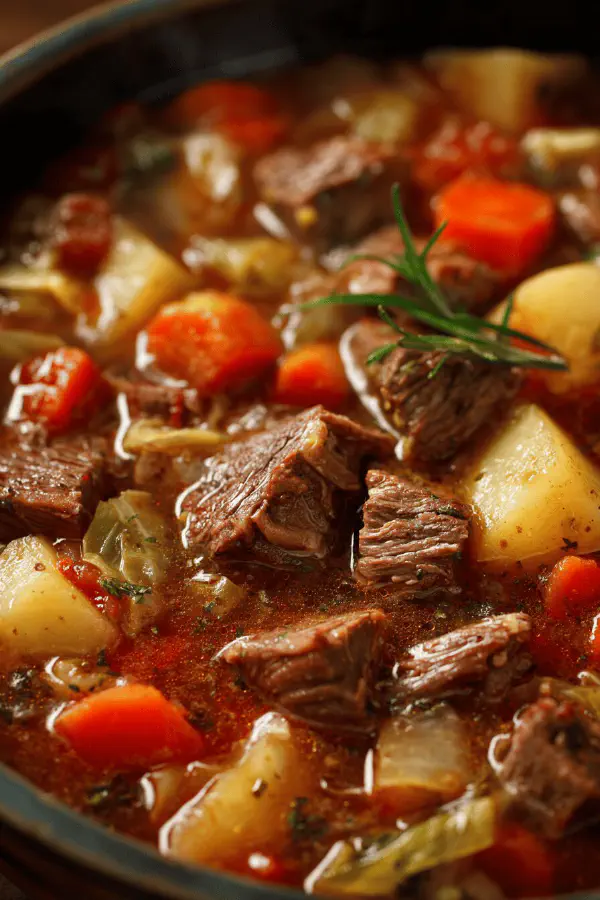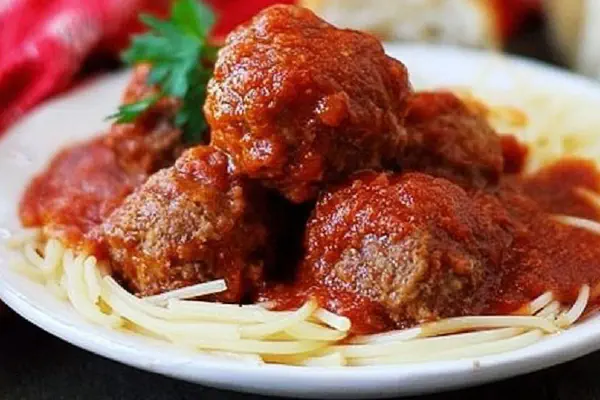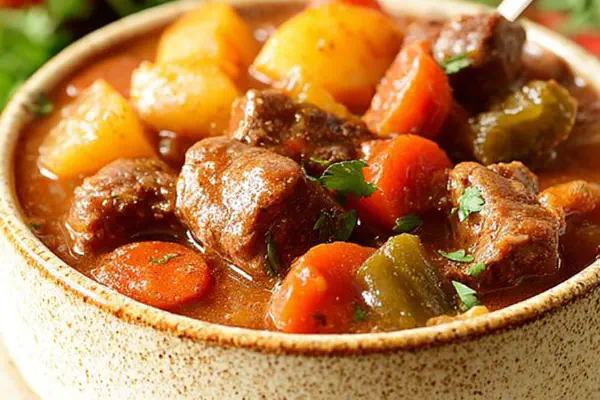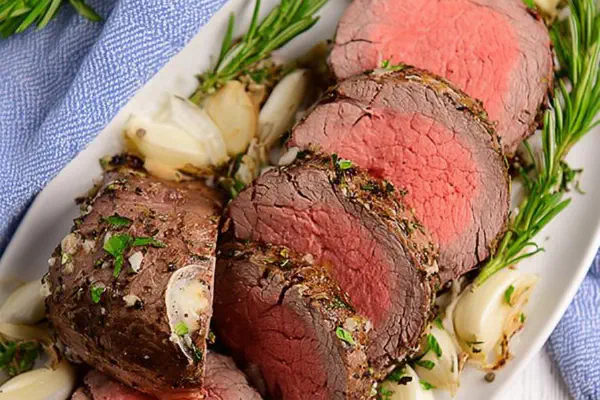Featured Recipe
Beef Vegetable Pot Boil

By Kate
"
A hearty combination of de-boned beef shoulder cubes, mixed vegetables, and a savory tomato-mustard broth. Seven one-liter jars prepared for canning. Slow simmer and pressure cook for deep melding of flavors. Substitutions include chicken broth swapped for beef for lighter touch; mustard replaced with whole grain for texture. Added parsnips for a sweet twist, softened alongside carrots and cabbage. Salt adjusted for preservation balance. Preparation involves precise layering of raw ingredients in hot jars, then sealed and processed under pressure for a reliable shelf life. Cook times tweaked for optimal vegetable integrity and beef tenderness.
"
Prep:
25 min
Cook:
Total:
Serves:
14 portions
beef
vegetables
cooking
canning
Introduction
Big hunks of beef, chunks of veggies, raw in jars waiting for the steam bath. No fuss. Pot goes on, pressure builds. The smell creeps in hours later. Beef shoulder, fatty trimmed, browned in bitesize pieces. Onions and garlic sweat in oils, broth to deglaze, a spoon of tomato paste. Mustard swapped, coarse grains crack beneath teeth. Instead of potatoes alone, sweet parsnips join. Carrots whole, crisp tops peeled away. Cabbage sliced paper-thin, celery’s fresh bite. Jars fill with life in layers: root veg, meat, bay leaf, salt measured sharp. Liquid poured, air bubbles chased away. Caps sealed tight. Pressure locks the flavors inside. Time counts down. Patience pays off. Stored ready to warm hearts and cold nights.
Ingredients
About the ingredients
Beef shoulder de-boned and trimmed reduces fat but keeps connective tissue for rich gelatinous broth. Using chicken broth lightens flavor but keeps umami. Whole grain mustard replaces Dijon, adding texture and milder heat. Parsnips bring subtle sweetness, balancing earthiness of potatoes and cabbage. Salt measured with pickling precision ensures safety in canning. Vegetables kept small or thin for even cooking under pressure. Oils for melting aromatics, not frying in heavy fat. Bay leaves standard for depth. Quantity tweaks balance jar size and number. Keep vegetables fresh and dry before layering to avoid cloudiness in liquid.
Method
Technique Tips
Essential to brown meat in batches to avoid steaming, locking flavor early on. Deglazing gathers all the browned bits off pan bottom—the hidden taste base. Tomato paste and mustard stirred in create subtle acidity and tang. Use hot broth for filling to prevent jar breakage. Avoid metal tools inside jars to prevent scratches, which can weaken during pressure. Air bubble removal critical for safety and even heat distribution. Headspace must be exact — too narrow traps expansion, too wide invites spoilage. Rings just finger-tight to allow air escape but prevent leaks. Pressure canning incubated with vent open first to purge air. Timings adjusted from standard by few minutes to account for jar size and vegetable change. Natural pressure release prevents jar shifting and barges liquid back up. Cooling jars undisturbed. Label immediately for rotation.
Chef's Notes
- 💡 Start with browning meat. Brown in batches. It’s crucial for flavor. Steaming is a risk. Lock those flavors in. Watch the heat. Too much and you’ll lose the good stuff. Brown just right. Don’t overcrowd the pan.
- 💡 Use fresh vegetables. Freshness matters. Keeps the integrity. Small cuts, that’s the trick. Even cooking is key. No mushy bits later. Thin cabbage slices, they soften without losing shape. Same with parsnips. Balance sweetness too.
- 💡 Layer carefully in jars. Construct layers thoughtfully. Potatoes first, then veggies. Finally the beef. It’s a precise process. Broth keeps everything moist. Leave headspace. Too little and you risk explosion. Too much, spoilage.
- 💡 Pressure canning details are vital. Lock the lid tight. But not too tight. Timing is crucial. One hour, twenty minutes for one liter jars. Keep an eye on pressure. It should stay steady. Release pressure naturally afterward.
- 💡 Storage is important. Store in a cool place. Dark areas work best. Label jars by date. Rotate stock based on dates. Check seals for safety. Pressure sealing means longevity if done right. Take care of your jars.
Kitchen Wisdom
How do I ensure safety in canning?
Use fresh ingredients. Follow pressure times exactly. Jars should be clean and sealed well. Avoid moisture in jars. That’s a spoilage trigger.
What if I don't have pressure canner?
You can freeze instead. Prepare as usual. Use freezer-safe containers. But this won’t last as long as canned. Plan for shorter use.
What are alternatives for beef?
Chicken or turkey can work. Adjust broth as needed. Flavor changes occur. Use different vegetables if desired. Keep balance close.
How should I store my canned beef stew?
Cool dark places best. Avoid sunlight. Keep jars upright. Check seals regularly. Rotate every few months for freshness.



